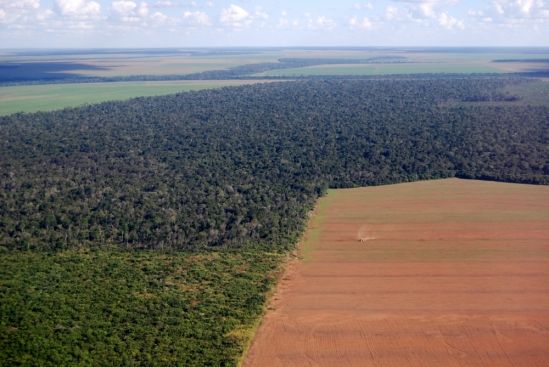
🌴 The project that saved 18,000 square kilometers of rainforest
An agreement between growers and buyers shows that it is possible to increase soy production in Brazil without felling any rainforest.
Share this story!
Deforestation in the Amazon reached its highest level since 2008 last year. But there are some joys. One is that the fellings are still less than half as large as they were in 2004. Another is the Amazon Soy Moratorium (ASM) project. According to a new study from UC Santa Barbara in the USA, ASM has since 2006 saved 18,000 square kilometers of rainforest - an area as large as Värmland .
What happened in 2006 was that a number of organizations, led by Greenpeace, succeeded in getting local soy buyers to agree not to buy soy grown on newly harvested land. This meant that growers could not sell soy that came from such land.

According to the researchers' analysis, ASM has meant that the vast majority of growers have also stopped felling forests for soy cultivation. The researchers' calculations show that ASM on its own reduced deforestation in the Amazon by 35 percent between 2002–2016.
Instead of just breaking new ground for the crops, the farmers have taken better care of the land they already have. During the same period, soybean production on existing arable land increased by 400 percent .
The researchers were worried that the soybean growers had bought up meadows and cultivated there instead. It would then only move over the problem as livestock farms, which are not covered by ASM, would cut down rainforest to replace these meadows. But better yet, similar agreements were introduced for animal husbandry so the farmers did not fell any forest to get new land.
The project has been so successful that the organizations behind the agreement are now renewing it . One reason for this is that the new Brazilian government has not shown the same willingness to protect the Amazon as previous governments. To date, investors and companies worth a total of three trillion dollars have signed a letter stating that they will only buy soy from growers who follow ASM.
So even though it may look dark for the Amazon right now, there is evidence that it is possible to combine efficient agriculture with good nature conservation. Hopefully this can lead to a reduction in fellings in the future.
By becoming a premium supporter, you help in the creation and sharing of fact-based optimistic news all over the world.


